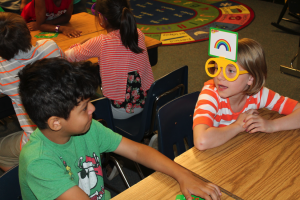
Students progress in their language learning by using Spanish in all subject areas
How many languages do you speak? Chances are, if you are like many native-born Americans, the answer is a resounding…one. Only English.
Students at Marquette Elementary School in Muskegon, however, learn in both Spanish and English in the school’s dual language immersion program. The idea is that by the end of 8th grade, students will be prepared to enter high school fluent in two languages, regardless of their native tongue. The results are astonishing.
Kids begin in kindergarten classrooms where 90 percent of the instructional language is Spanish and 10 percent is English. Slightly more than half of the students come from homes where English is the spoken language, while the rest are from families where Spanish is the parents’ first language. This model of bilingual education is known as an “additive model,” in that students “add” a language to their first language without losing the capacity to listen, speak, read, or write in their home language.
It works.
A Fraught History of Bilingual Education
Dual language programs have been in place in the United States since the late 1960s, when educators realized the power of language-minority communities to create language-additive environments for the benefit of all. Native English speakers could learn English and acquire a second language. Spanish speakers could retain their native language while learning English.
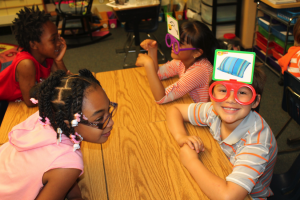
Students from a variety of cultural backgrounds benefit from dual language immersion at Marquette Elementary
Historically, the United States has had a love-hate relationship with bilingual education—one that may mirror the immigration debate. There is no doubt that language itself carries a vast array of not only cultural but political implications. Few people doubt the cognitive benefits of knowing more than one language. The advantages of being multilingual and multicultural are self-evident from the perspective of the business world and the competitive marketplace.
At the same time, there are the voices of those who seek to build walls—literally and figuratively. These may hurt the enthusiasm necessary to create and sustain robust models to cultivate bilingual education.
A Vast, Untapped Potential
At Marquette, the community has seen the profound impact of the school’s dual language immersion program, which helps sustain a healthy school and attract students to the district. Principal Kristina Precious need look no further than the scores of families who see the value in her program and seek to gain entrance for their children.
“When you hear English-dominant children speaking Spanish without an accent, you know the program is working,” Precious says.
If you ask the kids about learning Spanish, they just tell you it’s fun. The “fun factor,” of course, is one of the reasons the program succeeds.
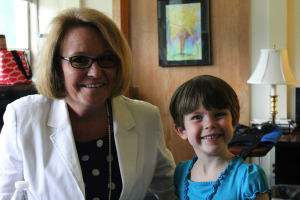
Principal Kristina Precious with a kindergarten friend who will be bilingual by 8th grade
The dedication and passionate commitment of teachers make the dual language immersion program happen on a daily basis. They see the value of an approach like this, in which students naturally acquire language without consciously realizing they are learning a second language.
This is one of the essential differences that sets effective dual language immersion programs apart from much more common world language programs, where kids attend “Spanish class.” None of us are conscious of our ability to understand and speak our first language. By providing natural language learning environments, dual language immersion programs create a very authentic opportunity to learn a second language.
I truly believe we continue to have a vast, untapped potential of language learning in the United States, especially in communities where immigrants continue to arrive and provide access to native speakers. But for the kids at Marquette Elementary, it’s just how they do school.
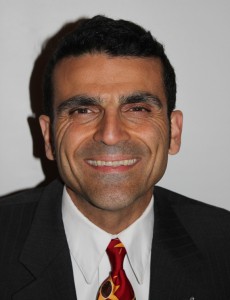 Rick Joseph is a National Board Certified Teacher and has taught 5/6 grade at Covington School in the Birmingham Public School district since 2003. Prior, he served as a bilingual educator and trainer for nine years in the Chicago Public Schools. Rick is thrilled to serve as the 2016 Michigan Teacher of the Year. Through Superhero Training Academy, Rick’s students have created a superhero identity to uplift the communities where they learn and live.
Rick Joseph is a National Board Certified Teacher and has taught 5/6 grade at Covington School in the Birmingham Public School district since 2003. Prior, he served as a bilingual educator and trainer for nine years in the Chicago Public Schools. Rick is thrilled to serve as the 2016 Michigan Teacher of the Year. Through Superhero Training Academy, Rick’s students have created a superhero identity to uplift the communities where they learn and live.

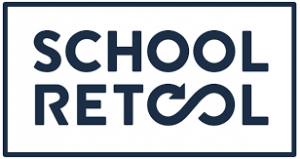 Like most teachers in Michigan, last week I spent two days proctoring the state’s SAT and ACT Work Keys tests. I collected the box of tests, read from the script, made sure there were no errant marks, and was generally absolutely bored.
Like most teachers in Michigan, last week I spent two days proctoring the state’s SAT and ACT Work Keys tests. I collected the box of tests, read from the script, made sure there were no errant marks, and was generally absolutely bored.  My earliest “hacks” came when I moved the focus away from the teacher, me, as the primary audience for students’ writing, and
My earliest “hacks” came when I moved the focus away from the teacher, me, as the primary audience for students’ writing, and  Rick Kreinbring teaches English at Avondale High School in Auburn Hills, Michigan. His current assignments include teaching AP Language and Composition and AP Literature and Composition. He is a member of a
Rick Kreinbring teaches English at Avondale High School in Auburn Hills, Michigan. His current assignments include teaching AP Language and Composition and AP Literature and Composition. He is a member of a